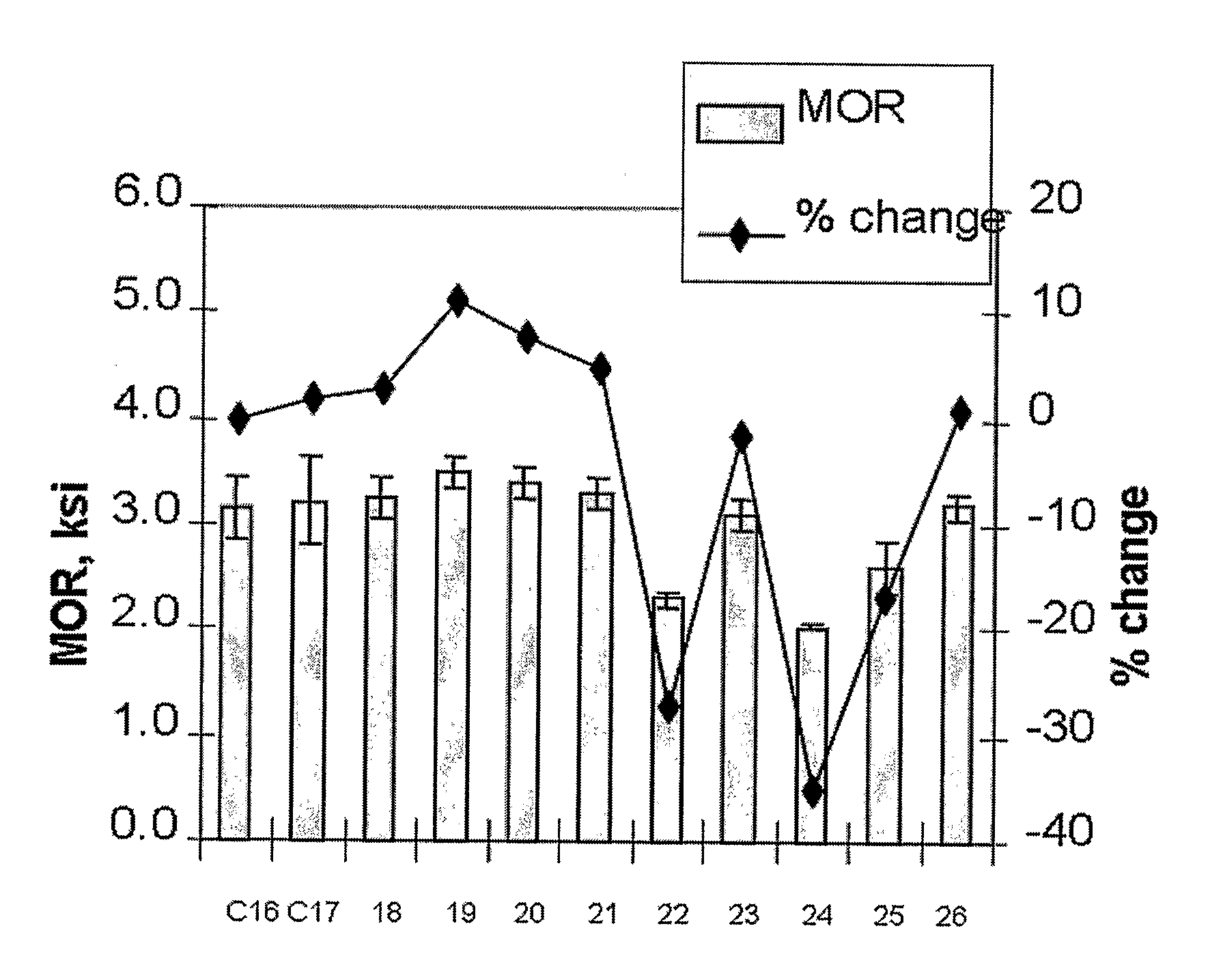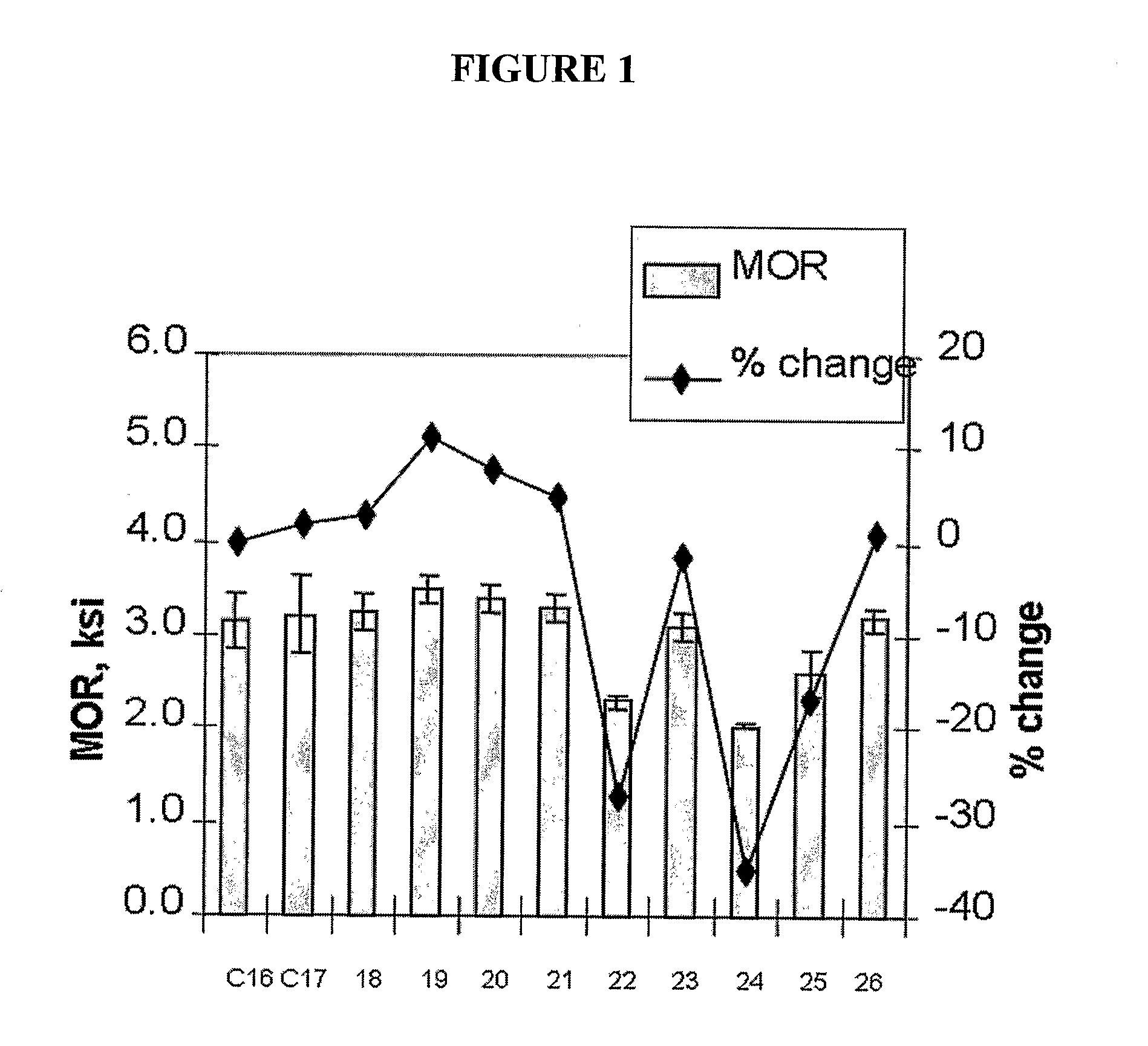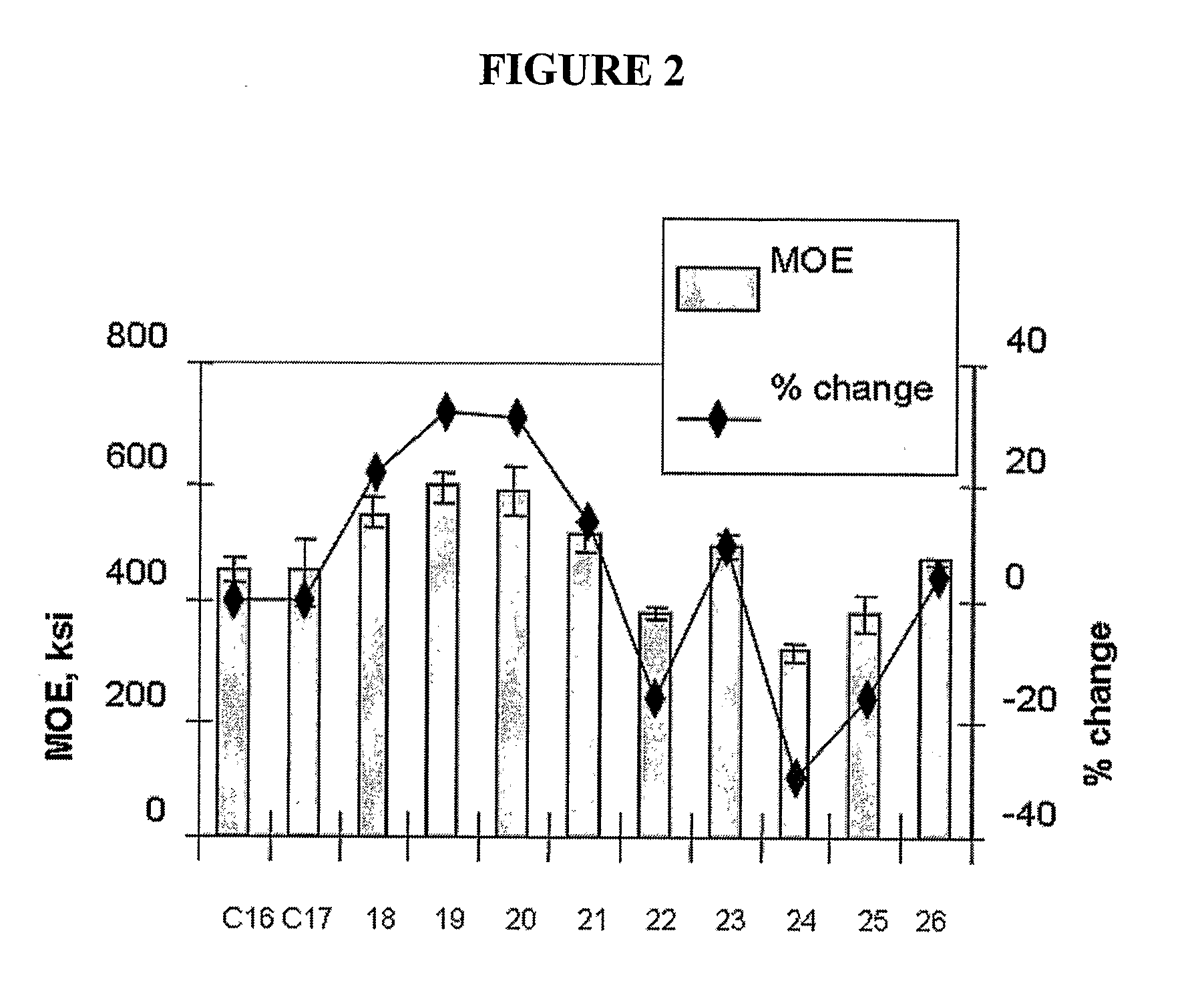Wood Fiber Plastic Composites
a technology of wood fiber and plastics, applied in the field of wood fiber plastic composites, can solve the problems of unwanted water absorption in some composites, other composites may have reduced water absorption, and remain susceptible to degradation, and achieve the effect of improving creep properties and keeping wood (cellulosic) constan
- Summary
- Abstract
- Description
- Claims
- Application Information
AI Technical Summary
Benefits of technology
Problems solved by technology
Method used
Image
Examples
example 18
[0078] In this Example 60 wt. % pine wood flour (60 mesh) is combined with 35 wt. % of the high density polyethylene of Comparative Examples 14 and 15, 1 wt. % of Lubricant C which is a high bulk density, vegetable based additive containing zinc stearate available from Boerlocher as Zinc Stearate Kosher, Code 8565, 2 wt. % of Lubricant D comprising 98 wt. % N,N′-ethylenebisstearamide and 2 wt % stearic acid, commercially available from IMS Company under the trade name Acrawax C, and 2 wt. % of an ethylene vinyl trimethoxysilane (EVTMS) copolymer with a melt index of 1.5 g / 10 min, a density of 0.922 g / cc, and 1.5% vinyl trimethoxysilane by weight. The formulation was run on a 35 mm counter-rotating twin-screw extruder with vented barrel having a ⅜ inch×1.5 inch die opening at 20 rpms and a melt temperature of about 330-335° F.
example 19
[0079] The composition of Example 18 was substantially reproduced except that the processing aids were replaced with 3 wt. % of Lubricant E which is a zinc-stearate based composition available as Lubrazinc™ W from Crompton Corp. Analysis of this sampled shows that the concentration of silicon is 373 ppm. Crosslinking in this composition is examined by measuring the silicon content in the portions of the composition after xylene extraction performed as described above. The concentration of silicon in the xylene extractable is 491 ppm while the silicon concentration in the portion that is insoluble in xylene is 478 ppm.
example 20
[0080] The composition of Example 18 was substantially reproduced except that Lubricants D is replaced with Lubricant C such that the composition includes 60 wt. % wood fiber, 35 wt. % HDPE, 3 wt. % of Lubricant C and 2 wt. % of the ethylene vinyl trimethoxysilane (EVTMS) copolymer.
PUM
| Property | Measurement | Unit |
|---|---|---|
| wt. % | aaaaa | aaaaa |
| flexural modulus | aaaaa | aaaaa |
| wt. % | aaaaa | aaaaa |
Abstract
Description
Claims
Application Information
 Login to View More
Login to View More - R&D
- Intellectual Property
- Life Sciences
- Materials
- Tech Scout
- Unparalleled Data Quality
- Higher Quality Content
- 60% Fewer Hallucinations
Browse by: Latest US Patents, China's latest patents, Technical Efficacy Thesaurus, Application Domain, Technology Topic, Popular Technical Reports.
© 2025 PatSnap. All rights reserved.Legal|Privacy policy|Modern Slavery Act Transparency Statement|Sitemap|About US| Contact US: help@patsnap.com



